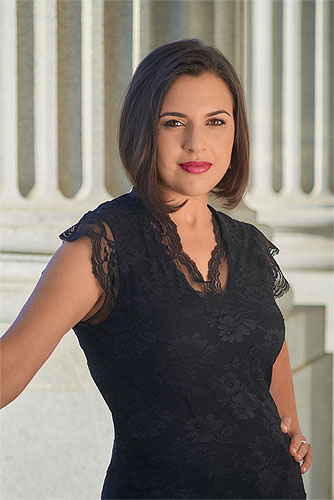100 metronomes can’t be wrong, but Cerrone premiere impresses most in Ligeti program
The penultimate program of the György Ligeti festival in this season’s University of Chicago Presents series took place Friday night at the Logan Center. Yet the most substantive music of the evening, curated by Third Coast Percussion, was a work by a young American composer.
One of Ligeti’s most endearing qualities is his antic sense of humor. The three Ligeti works featured on the first half richly represented the satirical, anti-establishment side of the Hungarian composer, even if none of the music showed Ligeti at his most essential.
The evening began with a rare performance of a work more talked about than presented, Ligeti’s infamous Poème symphonique (1962). Neither symphonic nor poetic, this bit of theater art for 100 metronomes shows Ligeti at his most Cageian.
Sixteen UC students walked out single file–in keeping with the mock-serious ceremony of the work–and seated themselves at the foot of the stage behind the 100 wind-up metronomes. At a lighting cue, all the students quickly–and very deftly–set off their assigned metronomes in something like simultaneity.
One will search for greater musical or historical meaning in vain. The principal conceit is to listen to the undifferentiated din of clackety-clack as it gradually slows down and thins out to nothing. As the sound decelerated over five minutes, the timbres slenderized until there were just a pair of metronomes on either side of the stage slowing down in a contrapuntal pas de deux, then silence.
Like many things in life, the concept of Poème symphonique is more interesting than the actual reality. It’s a goof but proved to be a flawlessly executed goof Friday night. Those who were there can say they heard the piece–once.
The even more concise Continuum (1968) followed. Ligeti conceived this miniature for two-manual harpsichord as a four-minute exercise in speed and frantic, ten-fingered virtuosity.
Continuum was presented in an arrangement for two-man marimba. Sean Connors and Peter Martin displayed staggering bravura at an swiftly accelerating tempo while maintaining complete rhythmic clarity. Still, few composers were as precise about specific instrumentation and sonic effects as Ligeti. Exciting as the marimba duo was, the recasting missed the feeling of a solo keyboardist pushed to the breaking point.
Ligeti never composed a percussion quartet, but came closest in Síppal, dobbal, nádihegedüvel (With Pipes, Drums, Fiddles). Scored for mezzo-soprano and four percussionists, the song cycle was one of Ligeti’s final works, completed in 2000.
Here too, there was an equal sense of Dadaist absurdity–not only in the largely nonsense poetry by Ligeti’s compatriot Sándor Weöres, but also in the profligate scoring for a bestiary of percussion instruments used sparingly. In his introduction, Connors seemed to admit as much, noting good-naturedly that the piece often seems to be “making fun of our profession.”
The seven-song, 14-minute cycle may not be a timeless masterwork but one is unlikely to hear it performed with greater commitment or more fiery advocacy than that delivered by soloist Rachel Calloway and Third Coast Friday night.
The mezzo-soprano’s scary intensity and crystal-clear enunciation were impressive throughout these mostly absurdist settings. Calloway made the most of the scant expressive opportunities as with the folk-like “Alma, Alma” and the ensuing “Keseredes,” sung by Calloway with lovely tone and sensitivity, and backed by vibraphone and a quartet of ocarinas.
Ligeti may have been the marquee name Friday but the most musical substance came after intermission with Goldbeater’s Skin by Christopher Cerrone.
The work was commissioned by Third Coast as a companion piece for Síppal, dobbal, nádihegedüvel, and premiered by them a year ago at Notre Dame. As with Ligeti’s cycle, Cerrone’s work is also cast in seven songs for mezzo and percussion quartet. Here the solo voice alternates with percussion movements, the singer and instrumentalists joining forces in the final two sections. (It’s too bad the G. C. Waldrep poems set by Cerrone were not printed in the program–especially when space was found for Weöres’ childish stanzas, with translations.)
Cerrone is clearly a gifted composer with an impressive individual voice as was made manifest in this Chicago premiere. One can immediately understand why Third Coast commissioned him. The percussion writing is resourceful yet economical throughout–as with the strummed guitar chords that open the first song with a bardic quality. While Cerrone’s instrumental scoring is striking in its effects, there is none of the see-what-I-can-do-with-a-cheese-grater excess that can pervade percussion quartet compositions.
More impressive still was the depth of the vocal writing, as fully realized by Calloway. There was a touching, plaintive quality to the searching line of “In My Dream.” And Calloway handled the soaring high climax of “My Companion and I” with expressive poise and technical aplomb. At its best, Cerrone’s vocal writing has a concentrated lyric beauty and conversational ease that recall Samuel Barber.
The University of Chicago Presents’ Ligeti Series concludes with Pierre-Laurent Aimard performing a selection of Ligeti Etudes and Beethoven’s “Hammerklavier” sonata 7:30 p.m. March 6 at the Logan Center.
Posted in Performances






